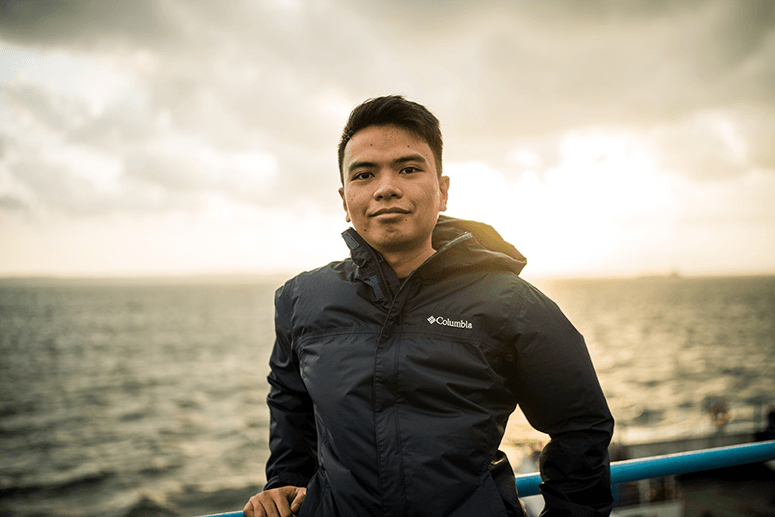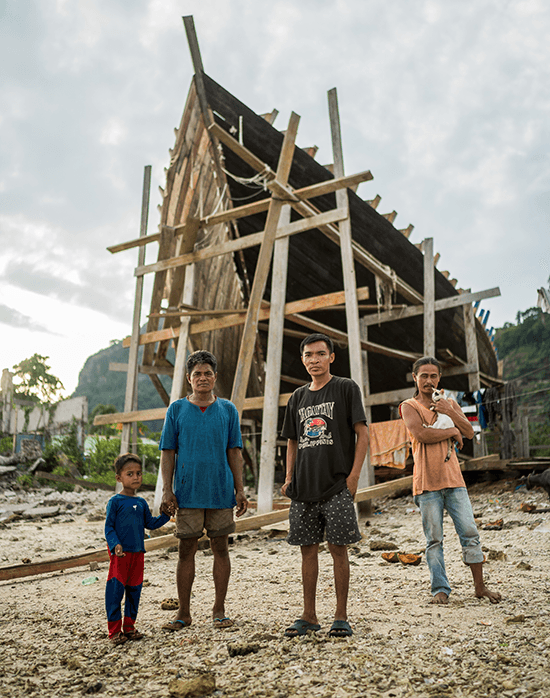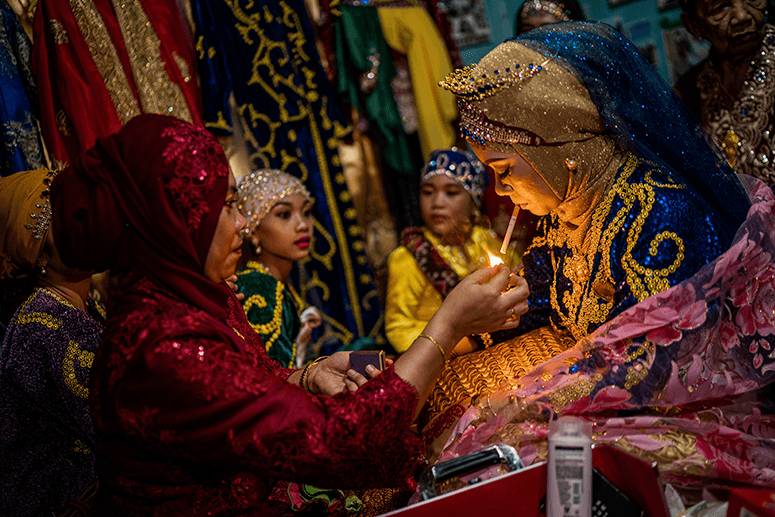The truth about capturing untold stories with Martin San Diego
“I wanted to be like Howie Severino or Kara David,” recalls photographer Martin San Diego. As a young boy, he would stay up late to watch iWitness, eager to one day capture the same realities in the Philippines with a depth and impact similar to Severino’s and David’s.
Before entering college, San Diego decided to put this dream on pause. He took up Computer Science, but his ever-growing passion would later manifest itself. “I tried working ComSci pero after a few months, I knew it wasn’t for me. Bumalik ako sa photography. Eventually, in 2016 I got a job where I had to cover a specific presidential candidate. That's when my love for photojournalism restarted." From there, more opportunities came San Diego’s way.
“I'm interested in long-term documentaries. That is my focus now. I do not do daily news. I do documentaries that take a few days, weeks, months, (or) years. I saw that there was a gap in that kind of storytelling.”
A multiple grantee of the National Geographic Society, his work has found a place in international publications like Washington Post, VICE, and Al Jazeera. There is no introduction needed for his kind of talent, but it is his hope to introduce new perspectives through his lens.

Amidst the range of issues he has covered, from the Drug War, the COVID-19 pandemic, and often-neglected environmental challenges, it is the unsettling reality of militancy and insurgency in Mindanao that truly resonated with San Diego. Already in his third year of covering the post-Marawi siege, this documentary project came to fruition from a series of experiences in his NGO work, eventually taking it on to complete his final requirement at Ateneo de Manila University. Before long, he found himself living for four months in Mindanao.
“Isang beses may naka-kwentuhan ako, ‘yung thesis niya ay about how exposure to armed conflict increases the chance of children taking part in the next armed conflict. Then it snowballed from there.”

"Bumabad," as San Diego calls it, is the backbone of his documentary photography. He experiences and comprehends the unique perspectives of his subjects, then later translates them to photographs that capture both harsh realities and mundane moments. The result is vulnerable yet realistic; tender yet grim. “Kailangan mong maintindihan yung sensitivities nila at ‘yung political at historical context,” he says.
“My documentary is about the youth who joined ISIS in the Marawi Siege of 2017. I had this question na bakit maraming bata na sumasali. I learned you don't take up arms, as the military says it, just for the fun of it. Laging may dahilan at pinanggalingan ang hugot nila. In their case, it was historical policies dating back to the 1900s. I'd like more people to hear it. Baka may magbago."
Beyond the surface, San Diego’s photos unearth deeply rooted histories, bringing to light stories that deserve attention and empathy. His photos often feel as if you’re being thrown into the exact time he shot the moment. There's a sense of comfort from the subjects; it never feels like they’re being intruded. “With documentary photography or storytelling, malaking element ‘yung time commitment. ‘Di pwedeng labas ng recorder or camera kaagad. Tambay ka muna kasama sila, kwentuhan kayo. You have to be one with them and experience their life as well. That's how we show them that you are sincere and really interested in what they're experiencing and what they have to say.”
“Every conflict has deeper roots. You don’t have a conflict dahil may gustong magbarilan. We have a conflict because someone was deprived of something months or years ago. May nuances na often overlooked in the daily news, (and) you have the convenience of investigating the nuances when doing long-form documentaries.”
He talks about challenging the singular history that we’ve been exposed to in our education system, and how it largely fails to cover the experiences of the Moros. “Sobrang rooted nila sa identity and history nila. These inform their decision-making and future planning. (For) the youth in Marawi, Cotabato, and other areas, kapag sinabing, ‘Bangsamoro ako,’ it entails a lot of pride. Their history is all about resistance – resistance to colonial occupation and how it drives them to do what they do, which is to work for other Bangsamoro.”
He shares that Mindanao’s culture and way of life can at times be underrepresented in our media and he hopes to change that. His work around the Moros opened him to newer perspectives: “It changed how I look at stories and problems. Every conflict has deeper roots. You don’t have a conflict dahil may gustong magbarilan. We have a conflict because someone was deprived of something months or years ago. May nuances na often overlooked in the daily news, (and) you have the convenience of investigating the nuances when doing long-form documentaries.”

If there’s anything he hopes to achieve with his work, San Diego wishes his photographs to be representatives of change and to serve as a call for better policies. “It’s representing these people in a big platform and better informing our policymakers on how they can craft more holistic policies that were previously inequitable to these people.” In a world driven by the relentless pace of breaking news, San Diego envisions a future where more publications come to appreciate the profound value of long-term documentaries, able to capture the complexities of the human experience.
***
Martin San Diego is an independent documentary photographer from the Philippines. He is a multiple grantee of the National Geographic Society, a finalist of The Aftermath Project, an alumnus of the Angkor Photo Festival Workshops, a Diversity Photo member, and a fellow at the Konrad Adenauer Stiftung Media Programme Asia. His work gravitates towards questioning the histories written by colonizers and victors.



